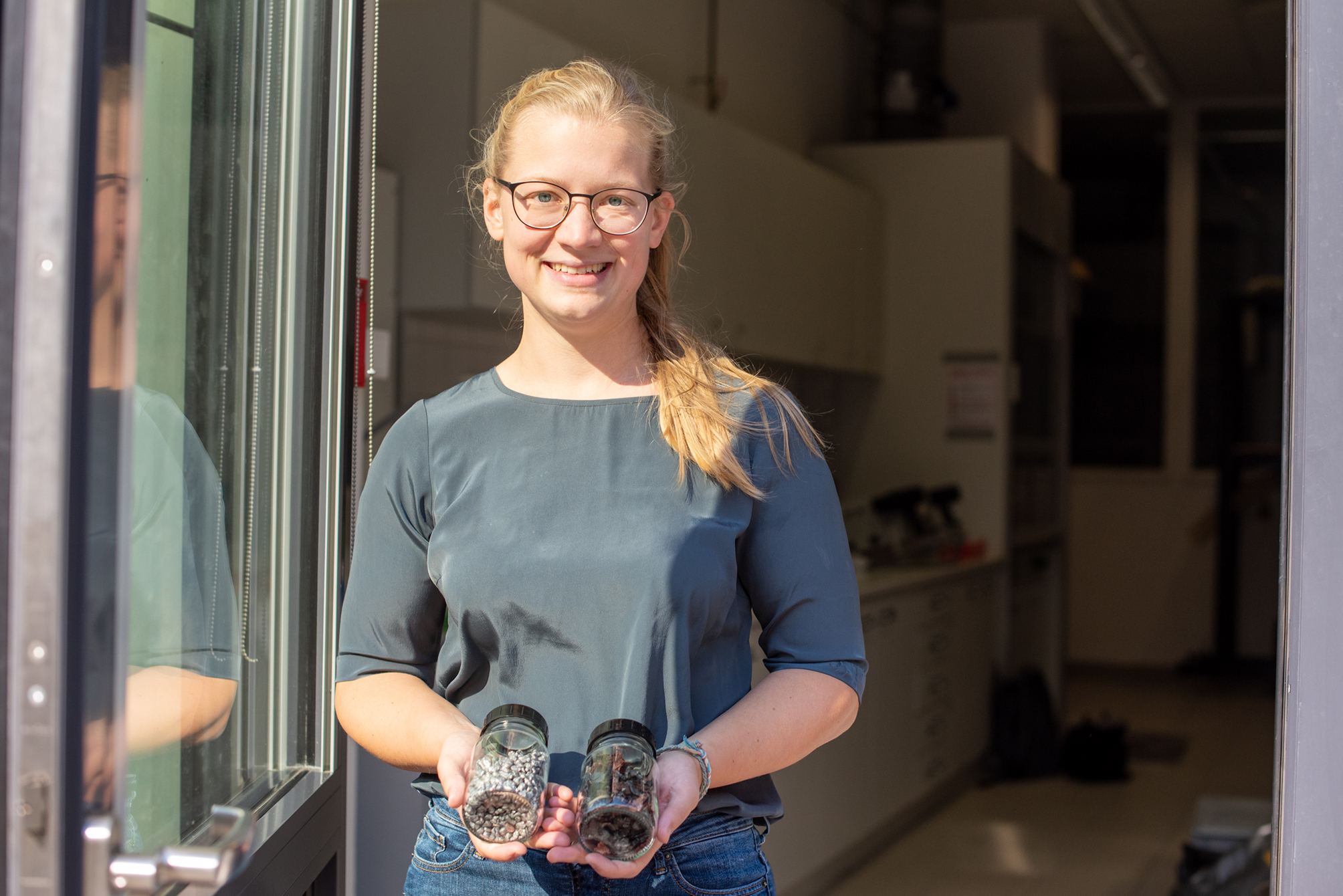 FH-Alumna Merle Zorn forscht am Fachbereich Bauingenieurwesen im Verbundprojekt DemoSens zu Batterierecycling. (Foto: FH Münster/Michelle Liedtke)
FH-Alumna Merle Zorn forscht am Fachbereich Bauingenieurwesen im Verbundprojekt DemoSens zu Batterierecycling. (Foto: FH Münster/Michelle Liedtke)
Lawn mowers, electric cars, e-bikes or photovoltaic storage units – many technical devices and means of transport are nowadays equipped with a battery. “These are huge quantities of batteries and ultimately resources that will be recycled in the foreseeable future. However, there are not yet sufficient recycling capacities for this,” explains civil engineer Merle Zorn. At the Department of Civil Engineering at Münster University of Applied Sciences, she is researching how batteries can be recycled more efficiently. Zorn’s research is embedded in the joint project DemoSens – digitalisation of automated dismantling and sensor-supported mechanical processing of lithium-ion batteries for high-quality recycling. Project partners are institutes of RWTH Aachen University. The project is led by Prof. Dr. Sabine Flamme from the Institute for Infrastructure – Water – Resources – Environment (IWARU) at Münster University of Applied Sciences.
Zorn already wrote her master’s thesis in the research project on dismantling battery packs from e-mobility. “Currently, the battery packs are still dismantled manually. With the large quantities of so-called end-of-life batteries that are expected in the future, this will no longer be affordable,” says the research assistant. For this reason, she has developed a labelling system in the project based on a QR code that contains, among other things, information for automated disassembly. Another sticking point in recycling: lithium-ion batteries contain different cathode materials – an essential component for the function of a battery – such as nickel-manganese-cobalt (NMC) or lithium-iron-phosphate (LFP). “Knowing this subcategory is crucial because for high efficiency, the recycling process needs to be precisely matched to the cathode material in question.” However, information about this has not yet been noted on the batteries. “We have therefore integrated information on all the raw materials used into the labelling concept.” A regulation obliging manufacturers to provide this kind of information label is currently in the works at the EU Commission. Zorn’s concept provides suggestions for an extension of this label with information for automated disassembly.
In the meantime, the FH alumna is working on the project with a full position. “I am currently researching to improve the output from recycling plants of lithium-ion batteries and thus the quality of the recovered materials,” says the civil engineer. “At Münster UAS, we are focusing on early sorting recovery of copper and aluminium, because otherwise there is little focus on this in current battery recycling research.” The two metals are found in various places in the electric vehicle battery. For example, the cathode material is deposited on aluminium foil, the anode material on copper foil. The housing of the batteries and cells is often made of aluminium. Copper conductor rails connect the cells and conduct the current from the battery to the car engine. In the recyclate, copper and aluminium have so far mostly been present as a mixture. This means that aluminium is usually lost in the recycling process.
In November, a series of tests took place with machine manufacturers to check which processes can be used to separate the metals even further. “In the next step, we will evaluate the results in detail. It has been shown that it is basically possible to distinguish and separate the metals with different machines,” says Zorn.
At the beginning of her civil engineering studies at Münster UAS, Zorn did not think she would one day go in the direction of battery recycling. “But then Prof. Flamme offered such interesting projects. Battery recycling is a very relevant topic.” She finds the reprocessing processes of the materials and the cooperation with regional and international project partners particularly exciting. www.fh-muenster.de/bau/index.php; www.fh-muenster.de/iwaru; www.fh-muenster.de/bau/personen/lehrende/flamme/